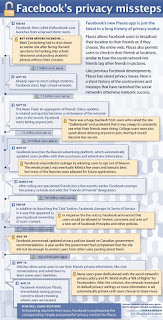Facebook Likes…Your Data
![]()
Developers are starting to lean on the features of Facebook outside of the walled garden of Facebook itself, and there are implications for us as users that we might not be considering.
The current trends of web design include giant footers, social media icons, extensive background images, and the omnipresent Facebook Like button. This Like button is the eye of Facebook, watching our slow march across the web from its tower at the heart of Menlo Park. At least that’s how it feels to me given its great potential to track my activity.
The use of the Like button on a site involves using Facebook’s Open Graph Protocol, essentially allowing a site owner to publish updates to a user’s feed. Facebook has realized that site owners aren’t taking advantage of this feature as much as they could, so Facebook even reminded developers of this feature a couple weeks ago on its developer blog. If a site that has been liked by visitors decides it wants to start promoting heavily on Facebook, visitors might find their Facebook feeds being overrun with spam.
But that’s not all. The Like button has just gone through a transformation, incorporating the more invasive features of the Share button, as the Share button itself gets phased out. Soon when you click the Like button on a page, you may find that your Facebook profile page (your own wall) will get the headline/title of the page, an abstract of the content and a thumbnail.
But wait, there’s more. Facebook has just updated its Comments Box plug-in to make it available to outside developers with more features than previously offered. Users can leave comments that appear both on an organization’s web site and on its Facebook page. Third-party commenting services like Disqus might be looking for a new business model if this takes off.
And that’s just the last few days. You may recall back in January when Facebook decided to make a user’s address and phone number available to developers. While this did not go over well with the community at large, all that angry tweeting and blogging (like this one?), along with some inquiries from Congress, have done nothing to keep Facebook from moving ahead. You may want to read today’s post at Mashable, which includes some links to the letter from two US Congressmen and Facebook’s response: Facebook Will Continue To Share User Addresses & Numbers.
As an aside, you may want to follow the advice from this tweet:
Since Facebook will now let apps access your address & number, I have set my no. to 650-543-4800 (FB Customer Service) http://bit.ly/gkJvYD
Facebook already contains the personal information of millions of users to varying degrees of detail. Add to that Facebook’s recent moves to take over commenting and linking services, pushing third party content into its own walled platform, and tracking everything you do within Facebook itself, and you can see it is quite a pile of data waiting to be mis-used and abused by anyone who has access. Factor in Facebook’s history of privacy problems and missteps, and we as end users should all be cautious about using all these features popping up across our favorite sites.
Perhaps in time we’ll come to think of sites that incorporate Facebook features as phishing scams or as simply being out of touch. For now we need to be cautious consumers and responsible developers when it comes to the lure of the ease of use.

See the image in context at its source.
Related
- How to publish updates to people who like your Open Graph Page
- Whenever you hit Facebook’s “Like” button you’re signing up for a subscription.
- Facebook Like Button Takes Over Share Button Functionality
- Facebook ‘Like’ button replacing ‘Share,’ world domination next
- Facebook Comments Box
- Facebook Brings Its Comments Plugin to Outside Publishers
- Rogue Facebook apps can now access your home address and mobile phone number
- Facebook Now Shares Phone Number & Address With Third-Party Apps
- Facebook Will Continue To Share User Addresses & Numbers
- Securing Facebook Places (from Your Friends) (on this blog)
- Facebook Privacy UI Redesign Ideas (on this blog)
I’m not proud to admit this, but if Facebook could somehow expand the Grammar Filter (scroll to bottom) to the entire web, I might be more willing to succumb to Facebook’s rule.
Update March 3, 2011
Some time ago I heard about the Facebook limit of 5,000 friends. I had long since forgotten about it and the complaints people posted. Apparently so did Facebook. Jeffrey Zeldman ran into this limit and found it affects his ability to Link anything. This may be a blessing, at least from my perspective. Regardless, read his post Like and Friend are broken in Facebook for more info.
Leave a Comment or Response